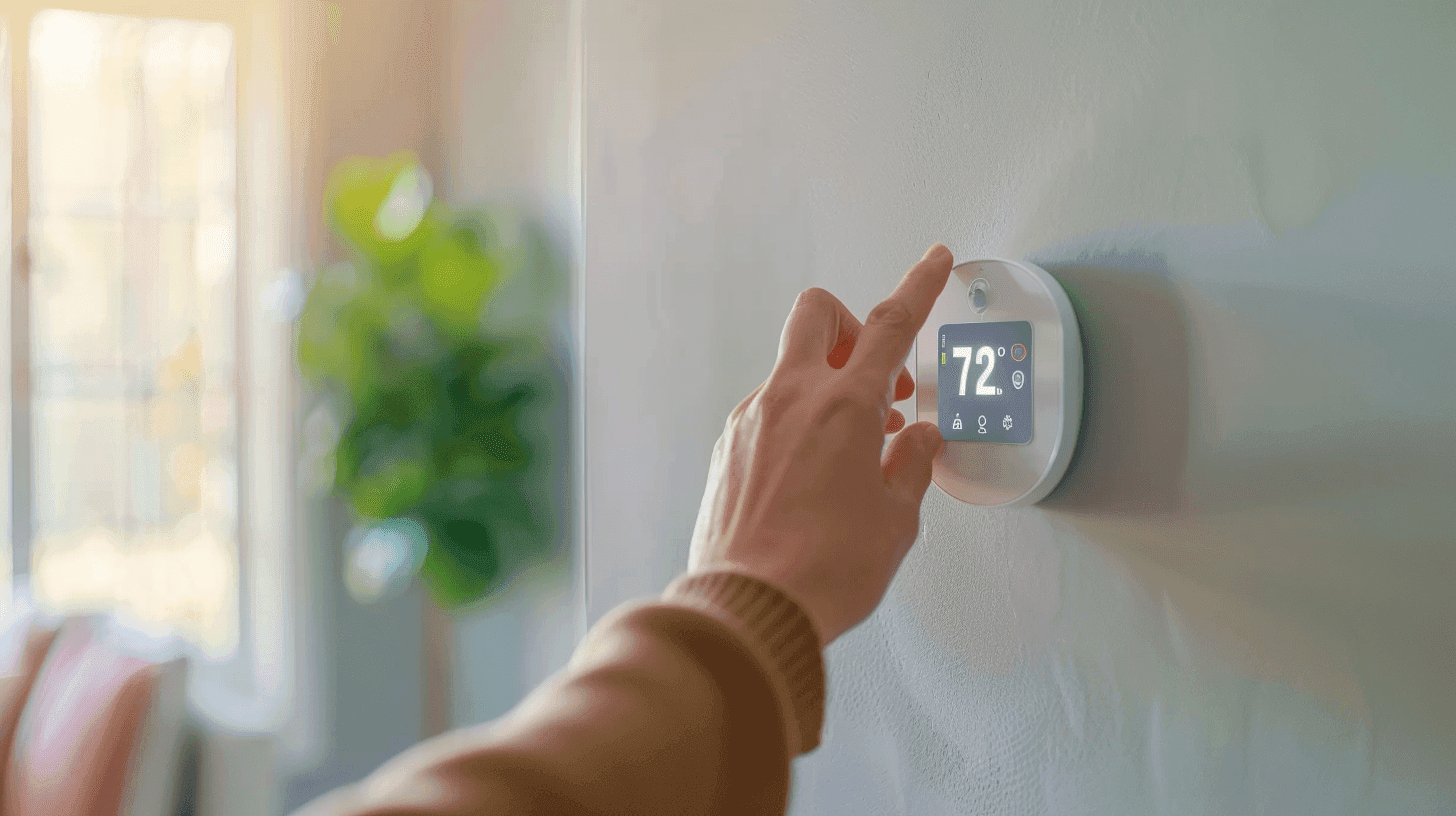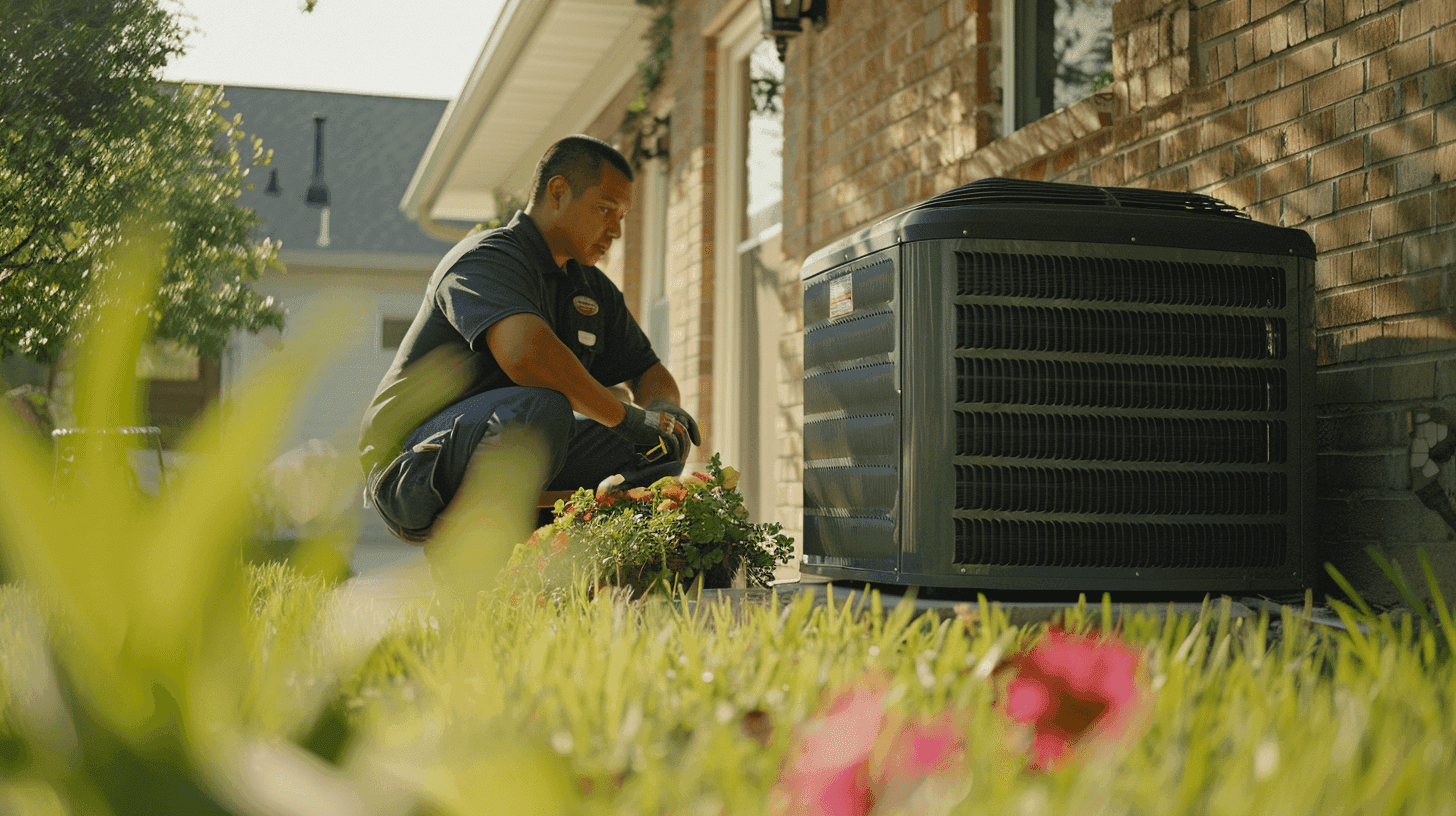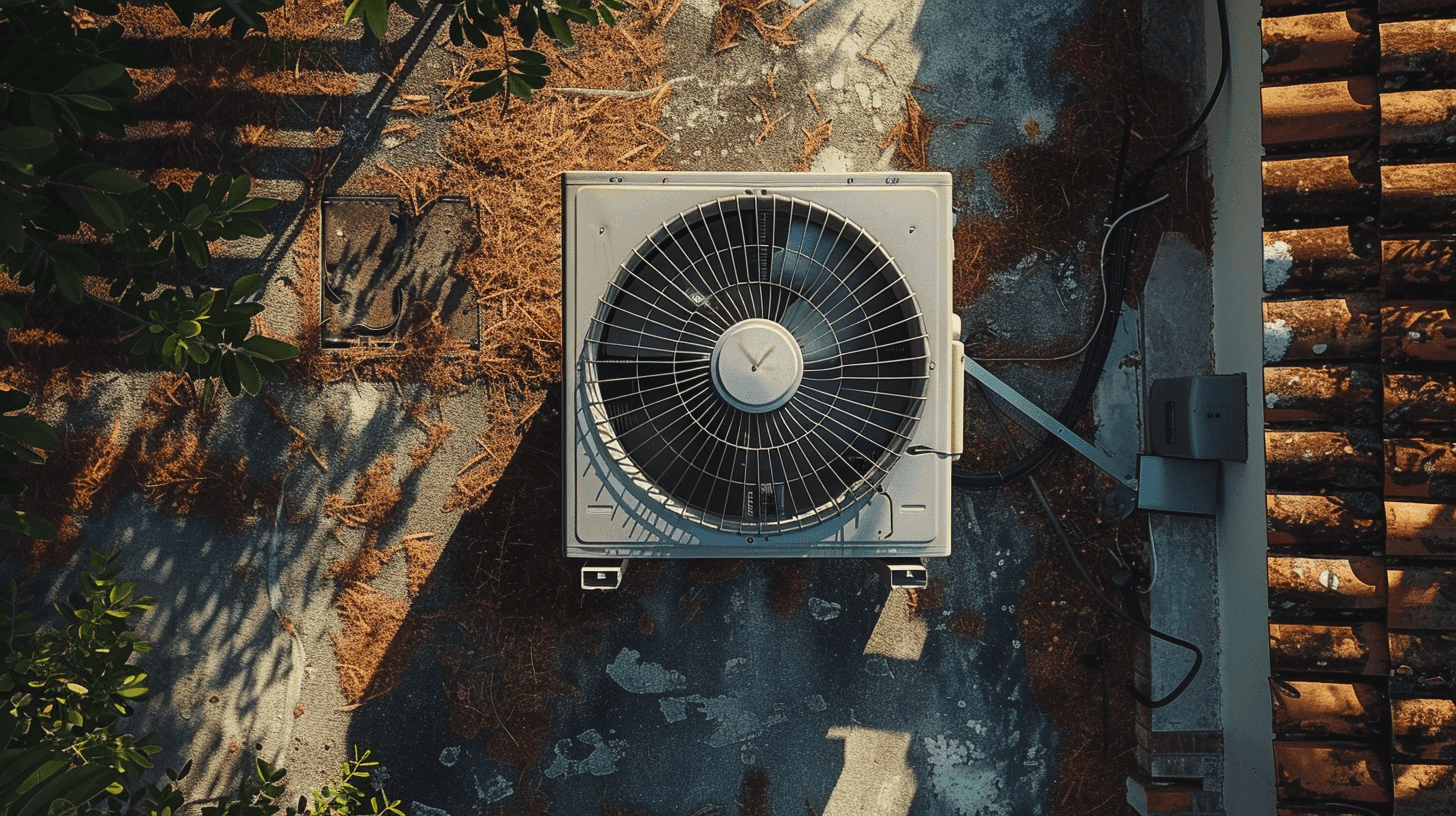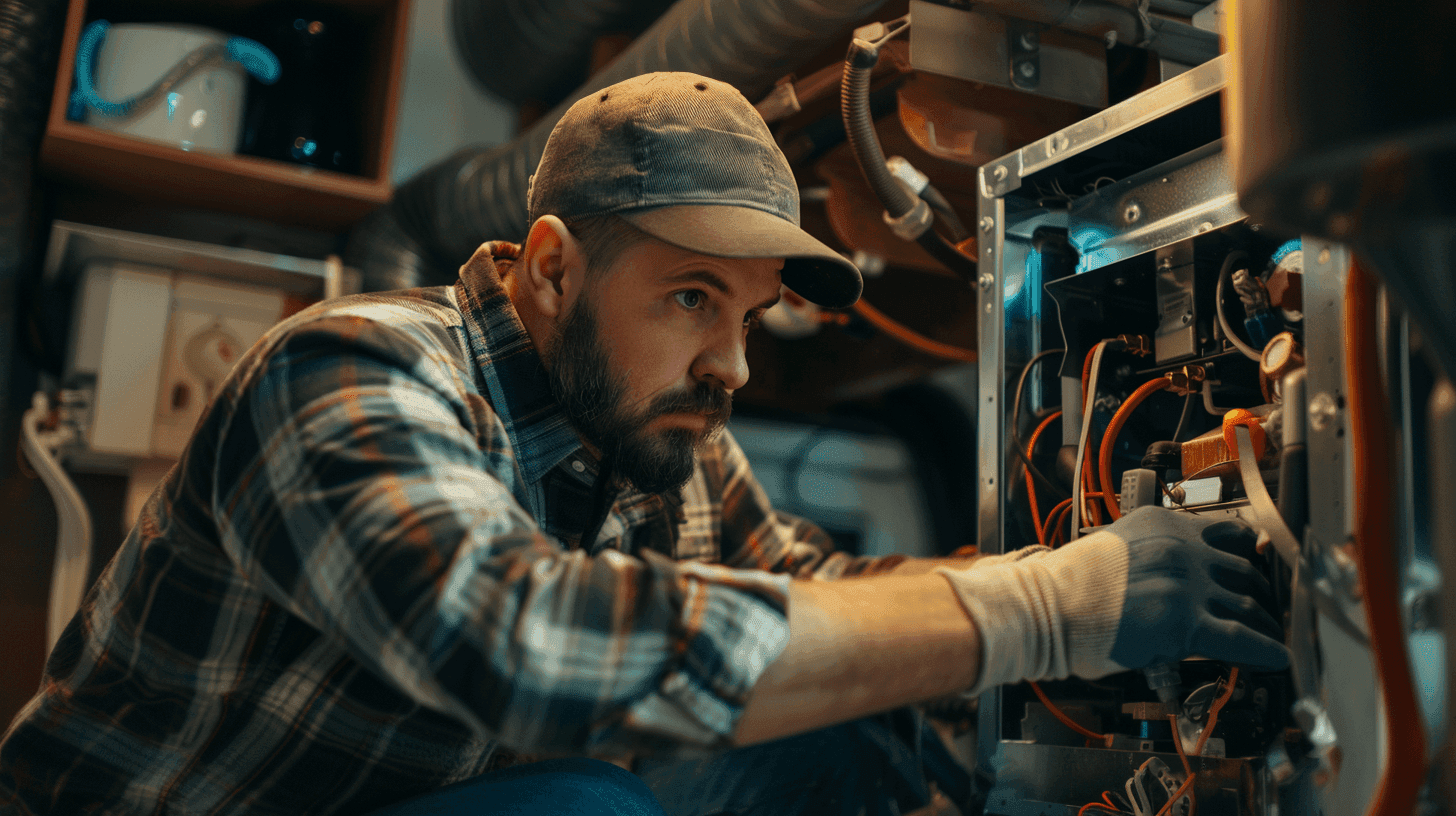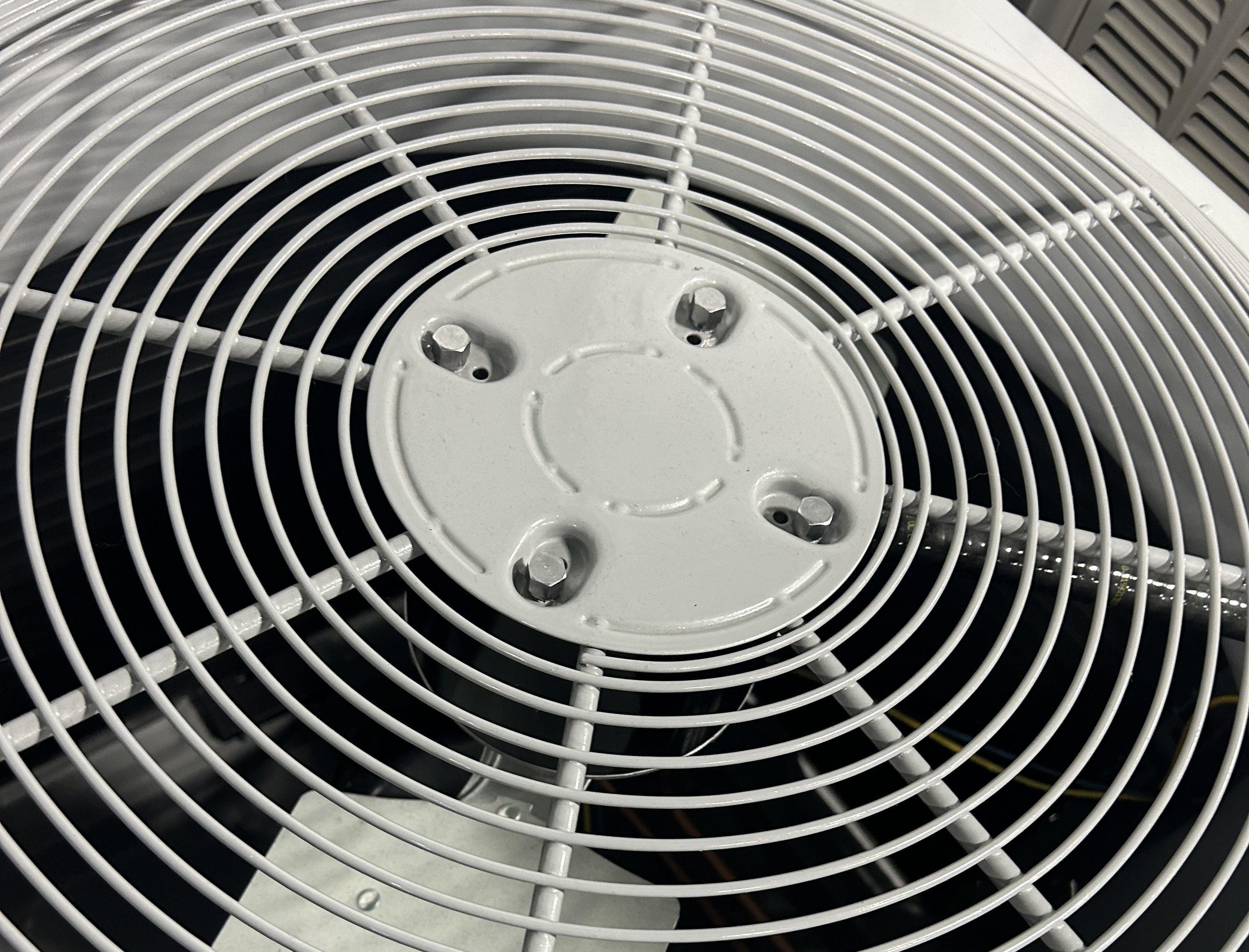
What Temperature Should I Set My Air Conditioner to in Summer?
Sharing your quote takes less than a minute

As summer settles in and the temperature and humidity rise, it's important to ensure you have a properly functioning air conditioning system to keep your family safe and comfortable during the dog days of summer.
While comfort is key, you also want to keep your summer energy costs down. Ideally, you are looking for a balance between comfort and affordability, and this is possible by knowing the best AC temperature for summer.
Best AC Temperature Settings While You Are Home
The U.S. Environmental Protection Agency suggests that people set their air conditioners to 78 degrees in summer while they are home for maximum savings on their utility bills. However, comfort is subjective, and what works for one household may not work for others.
As you consider the most comfortable room temperature for your lifestyle and family, keep in mind that for each degree that you set your thermostat above 72 degrees, you can save up to 3% on your energy bill.. It may take you some trial and error to learn which AC temperature setting offers the best balance between comfort and affordability.
Best Air Conditioner Temperature Settings While Away From Home
When you're away from home, increasing the indoor temperature by 5 to 7 degrees can support your energy-efficiency goals and lower your monthly energy costs. The suggested temperature setting by Energy Star is 85 degrees when no one is home. The best AC temperature for sleeping, meanwhile, is 82 degrees.
However, if you live in a region of the country with consistently high humidity levels, consider setting the thermostat closer to 80 so your HVAC system doesn't run as frequently. Air conditioners also dehumidify the air to balance humidity levels which can prevent mold or mildew growth that are harmful to your home and health.
It's also important to consider your furry friends including dogs and cats when you set the thermostat in the summer. Ideally, you shouldn't set the temperature any higher than 80 degrees to ensure their health and safety.
Using a programmable or smart thermostat will help you manage your indoor temperature by allowing you to pre-set the temperature based on the time or day of the week.
Is 72 a Good Temperature to Set Your AC to?
Is 72 degrees the best temperature for AC units in the summer? Homeowners may think setting the thermostat to 72 degrees is the best way to keep their home comfortable, but there are several ways to stay cool and keep your energy costs within budget.
If you're used to keeping the thermostat at 72 degrees in summer weather, start out slow by notching the temperature by one degree at a time. By gradually increasing the temperature, you may find that your space remains comfortable even if the setting is higher than normal such as 74 degrees. Over time, you'll learn how to set the AC temperature for cooling in the summer which works for everyone in your family.
How to Maximize Cooling Efforts in Your Home
The best AC temperature for summer will always be different across households. Instead of making your air conditioning system work harder, you can use other methods to achieve the most optimal air conditioner temperature for your home.
Use Fans
Circulating air throughout the house is a good way to prevent it from getting too hot. Fans help create a cross flow and are beneficial in making your home feel cooler when you increase the air conditioner setting. Types of fan or personal coolers to consider:
- Table fan: The Honeywell HT-908 Turbo Force Air Circulator Fan is a small but powerful table fan perfect for your desk or floor. With more than 12,000 5-star reviews, this fan comes highly recommended and fits into nearly any budget with a $37.18 price tag.
- Tower fan: A tower fan promotes air circulation throughout an entire room. The Lasko Portable Electric 42″ Oscillating Tower Fan has a timer and nighttime setting and comes with a remote control to make cooling your space even easier.
- Pedestal fan: For medium to large rooms, the Amazon Basics Oscillating Dual Blade Standing Pedestal Fan offers three breeze modes and operates quietly. The fan's adjustable height and vertical angle allow for customized breeze flow.
Ceiling Fans
While a ceiling fan doesn't actually lower the temperature in your home, it creates a wind-chill effect that speeds up the evaporation process on your skin to make you feel cooler. This means you can turn up the thermostat and save on your energy costs without sacrificing comfort. Most ceiling fans cost as little as $0.15 a day to operate for 12 hours. We like the Hunter Dempsey Indoor Low Profile Ceiling Fan because its design is perfect for all rooms, even those with low ceilings.
Close Blinds and Curtains
Sunlight increases heat, so keep the curtains and blinds drawn during the day to keep it cooler. Blackout curtains can reduce the amount of heat that enters a room by up to 24%, so as you head out for the day, pull the drapes closed. Tinted windows are also useful in preventing the sun from heating up the house during the day.
Avoid Using Heat-Generated Appliances
When it is already hot inside the house, try to avoid using heat-generating appliances such as ovens, stoves, and dryers as much as possible. The oven, for example, heats up the house quickly, and, in summer, this takes only a few minutes. If you have a yard or patio, grilling out can create an enjoyable summer meal and keep your house cool without having to lower the temperature. Consider using appliances such as your dryer in the evening when it's not as hot outside.
Insulate and Seal
Proper insulation and sealing of doors, windows, and cracks or gaps in the walls can prevent hot outdoor air from entering your home. Sealing and insulating these areas can keep your home cooler without having to raise the temperature of your thermostat.
Use Energy-Efficient Lighting
Traditional incandescent bulbs emit more heat than energy-efficient alternatives including LED bulbs. Switching to LED lights can help reduce excessive heat buildup in your home.
Optimize Airflow
Arrange furniture and other belongings to ensure proper airflow. Also, avoid blocking any vents to allow cool air to circulate effectively.
Benefits of a Programmable or Smart Thermostat
If you want precise temperature control throughout the year and increased energy savings, consider installing a programmable or smart thermostat. These devices can automatically adjust the temperature in your home. A programmable or smart thermostat offers the following benefits:
Higher Efficiency and Energy Savings
Both programmable and smart thermostats allow you to pre-set the temperature based on the time of day and the day of the week for increased energy savings while you're away from home or sleeping. For example, during the summer, you can pre-set the thermostat to 85 degrees while you're away at work from 9 to 5 and have it automatically lower to 78 degrees before you arrive home. This prevents cooling an empty house which can save you a significant amount of money on your energy bills. The best AC temperature for sleeping is subjective but raising the thermostat a few degrees overnight can lead to significant cost savings.
Increased Comfort and Convenience
If you're tired of walking to the thermostat throughout the day to manually change the temperature, you'll thoroughly enjoy the convenience that comes with installing a programmable or smart thermostat. With these types of thermostats, you can easily set and maintain your desired temperature throughout the day without manual adjustments. They also provide a more precise and consistent temperature control to ensure optimal comfort in your home.
Smarter Options
A smart thermostat takes convenience and efficiency to another level. Smart thermostats are Wi-Fi compatible, allowing you to set the thermostat from your smartphone or tablet from anywhere in the world with an internet connection. This is incredibly convenient if you forgot to adjust the temperature before leaving for work or vacation. Smart thermostats can also learn your temperature preferences over time and make automatic adjustments.
Energy-Usage Reports
Many smart thermostats provide energy-usage data that allows you to analyze your heating and cooling patterns. This valuable information allows you to make informed decisions about your energy consumption habits so you can make necessary adjustments to your heating and cooling patterns.
Environmental Impact
Since smart and programmable thermostats allow you to keep your energy costs under control by operating your air conditioner less often, they also contribute to a more sustainable and eco-friendlier environment.
The Importance of Regular AC Maintenance
Adjusting your air conditioner a few degrees during the summer months can contribute to decreased energy costs. Another easy way to ensure your system operates efficiently while avoiding the chance of untimely breakdowns is through air conditioning maintenance.
Regular AC tune ups by a qualified HVAC contractor will ensure your system runs optimally throughout the warmer months. During an AC maintenance inspection, the technician will inspect, adjust, and clean any necessary components to ensure proper working condition. A qualified technician will also inspect for any minor issues and recommend the needed repairs to prevent a bigger, more expensive problem from occurring down the road.
If it's been several years since your air conditioner received a tune up or you can't remember the last time the service was performed, contact a trusted local HVAC contractor to schedule service.
HVAC.com Can Help You Buy With Confidence
Worried about overpaying for your next HVAC project? HVAC.com delivers comprehensive HVAC quotes within 24 hours, giving you peace of mind to move forward with confidence. Utilizing data from thousands of HVAC quotes, we’ve established fair pricing to save you time, money, and frustration.
AC Thermostat Setting FAQ
How to Find the Right Size Air Conditioner?
To find the right size air conditioning system for your home, multiply your home's square footage by 25. This number gives you the British Thermal Units (BTUs) needed for efficient cooling. For instance, if the size of your house is 1,200 square feet, you need an AC with 30,000 BTU for the perfect cooling.
Should You Set Your AC to 78-degree Fahrenheit?
When you are trying to find a balance between comfort and savings, it needs some trial and error to find the best AC temperature in summer. Although 78 degrees is the recommended setting for the maximum energy savings, you could raise or lower the temperature according to your needs.
What Is the Average House Temperature in Summer?
According to the U.S. Department of Energy, the average house temperature in summer hovers around 78 degrees. Depending upon your exact location, it can be as low as 70 degrees or as high as 80+ degrees at the peak of summer.
Sharing your quote takes less than a minute

